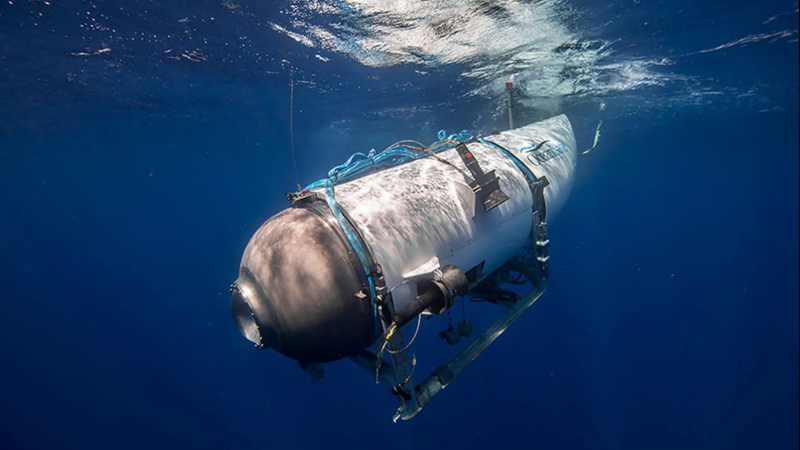Human remains, other evidence recovered from Titan submersible wreckage
Remnants from the Titan submersible wreckage - including presumed human remains - were recovered from the Atlantic Ocean seafloor, the U.S. Coast Guard announced Tuesday.
Five people died aboard the sub earlier this year while on a mission to explore the deep-sea wreckage of the doomed Titanic ocean liner, about 370 miles southeast of Newfoundland, Canada.
The sub drew global shock and horror when an attempted dive to the depths went askew on June 18 and a catastrophic implosion killed everyone on board.
Stockton Rush, pilot and founder of the submersible company OceanGate, was aboard the vessel with two members of a prominent Pakistani family, Shahzada Dawood and his son Suleman Dawood, British adventurer Hamish Harding, and Titanic expert Paul-Henri Nargeolet.
The Coast Guard previously said debris from the underwater boat were found scattered across a debris field roughly 1,600 feet from the Titanic.
U.S. and international agencies to hold joint evidence review
Remaining evidence recovered was transferred to a U.S. port for cataloging and analysis, the Coast Guard said Tuesday. Presumed human remains were recovered and transported for analysis by medical professionals, according to officials.
U.S. agencies, including the Coast Guard’s Marine Board of Investigation and U.S. National Transportation Safety Board, along with other international investigative agencies will hold a joint evidence review of the Titan remains, the Coast Guard said. Forensic testing will follow.
The Coast Guard’s Marine Board of Investigation will continue analysis ahead of a public hearing on the Titan implosion, the agency said Tuesday. No other details about the hearing were disclosed.
What happened to the Titan?
On June 18, five people embarked on OceanGate’s third annual expedition to the Titanic, where the company offered a chance to become one of the few to “see the Titanic with your own eyes,” according to an archived itinerary of the mission. Each passenger had paid $250,000 to see the wreckage.
The vessel, criticized for its unconventional design, was made of carbon fiber and titanium. It was about 9 feet high, 8 feet wide, 22 feet long, and weighed 25,000 pounds, according to OceanGate.
The submersible imploded on its way down the Atlantic Ocean, and debris was found a few days after the wreckage at about 12,500 feet – where there is enormous pressure, absolute darkness and extremely cold temperatures. In June, authorities said they found five major parts of the vessel, including its tail cone and landing frame.
Many safety concerns previously raised over Titan
The experimental sub company was alerted of safety issues by industry experts..
OceanGate operated three five-person submersibles and said it has completed at least 14 expeditions and more than 200 dives in the Pacific, Atlantic and Gulf of Mexico, according to its website. Unlike submarines, which are fully autonomous, submersibles have limited power reserves so they require a support ship that can launch and recover them.
In July 2018, OceanGate sued a former director of marine operations, David Lochridge, over an engineering report he wrote saying the craft under development needed more testing and that passengers might be endangered when it reached "extreme depths," according to a lawsuit filed that year in U.S. District Court in Seattle.
After meeting with the company about his concerns, Lochridge said he was fired and given ten minutes to clear out his desk and exit the premises. Lockridge and his wife filed a counterclaim, and the suit was dismissed following a settlement in November 2018.
That same year, dozens of industry experts from the Manned Underwater Vehicles committee of the Marine Technology Society, expressed safety concerns in a letter to OceanGate: "Our apprehension is that the current experimental approach adopted by OceanGate could result in negative outcomes (from minor to catastrophic) that would have serious consequences for everyone in the industry."

Disclaimer: The copyright of this article belongs to the original author. Reposting this article is solely for the purpose of information dissemination and does not constitute any investment advice. If there is any infringement, please contact us immediately. We will make corrections or deletions as necessary. Thank you.






